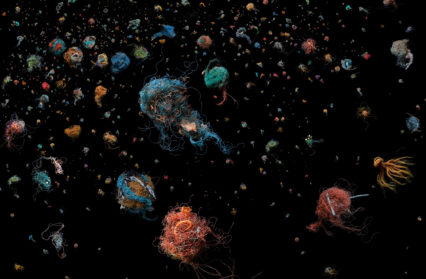Photographer Mandy Barker explores the impact of marine plastic pollution through Sea of Artifacts, a photography series touring as part of the Fotografiska Museum exhibitions.
Sea of Artifacts is a solo touring exhibition by the Fotografiska Museum, and presents my work over the past 10 years, which is dedicated to raising awareness concerning the issue of marine plastic pollution.
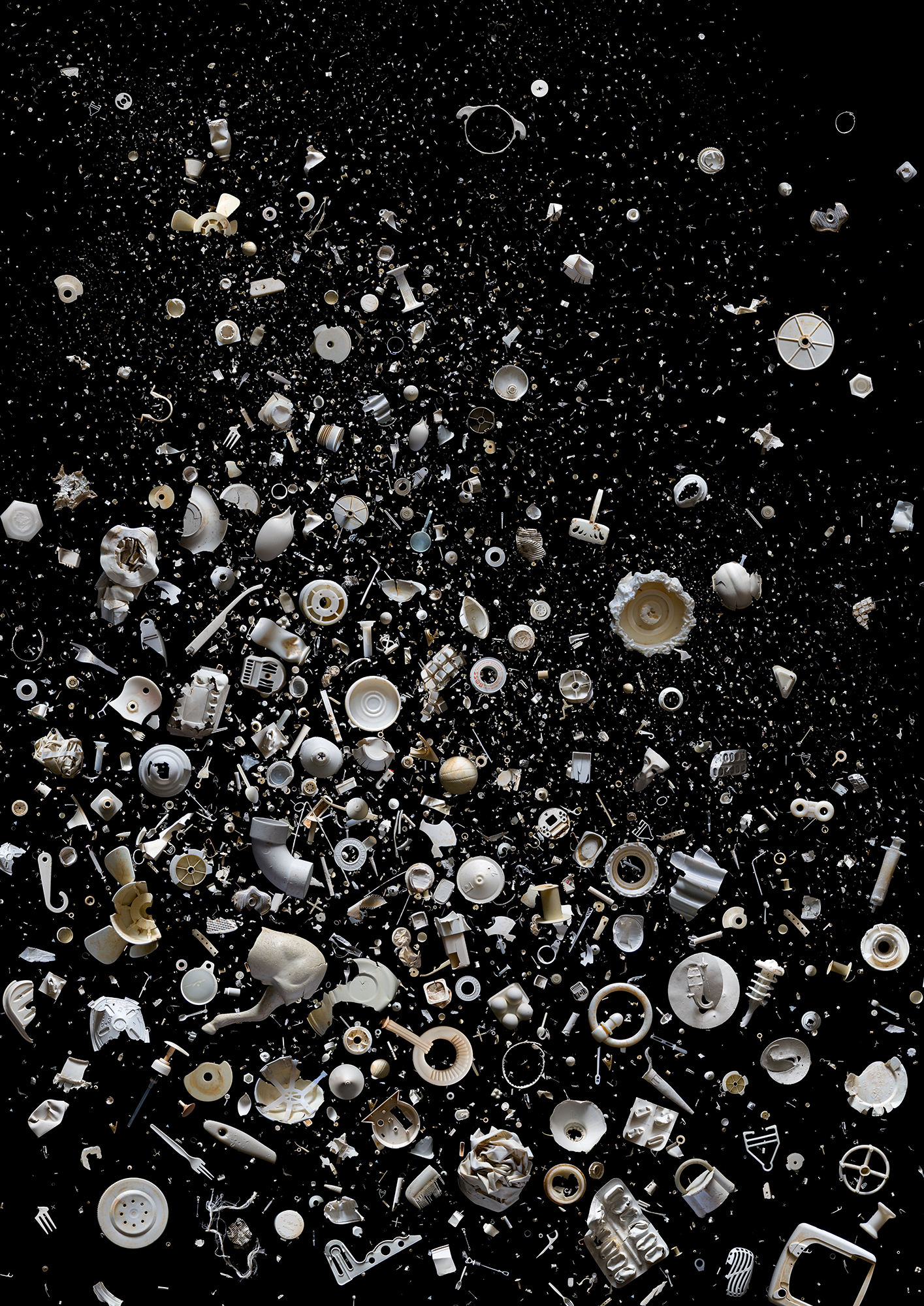
An artifact is an object made by a human being – in this case plastic objects manufactured on land, and of which over 8 million tons now finds its way into the ocean every year. I have recovered plastic items from single-use objects, to hazardous medical waste, and everything in between, from oceans and beaches all over the world. The artifacts within the exhibition include photographs, research notebooks, a film, and display cases of plastic specimens.
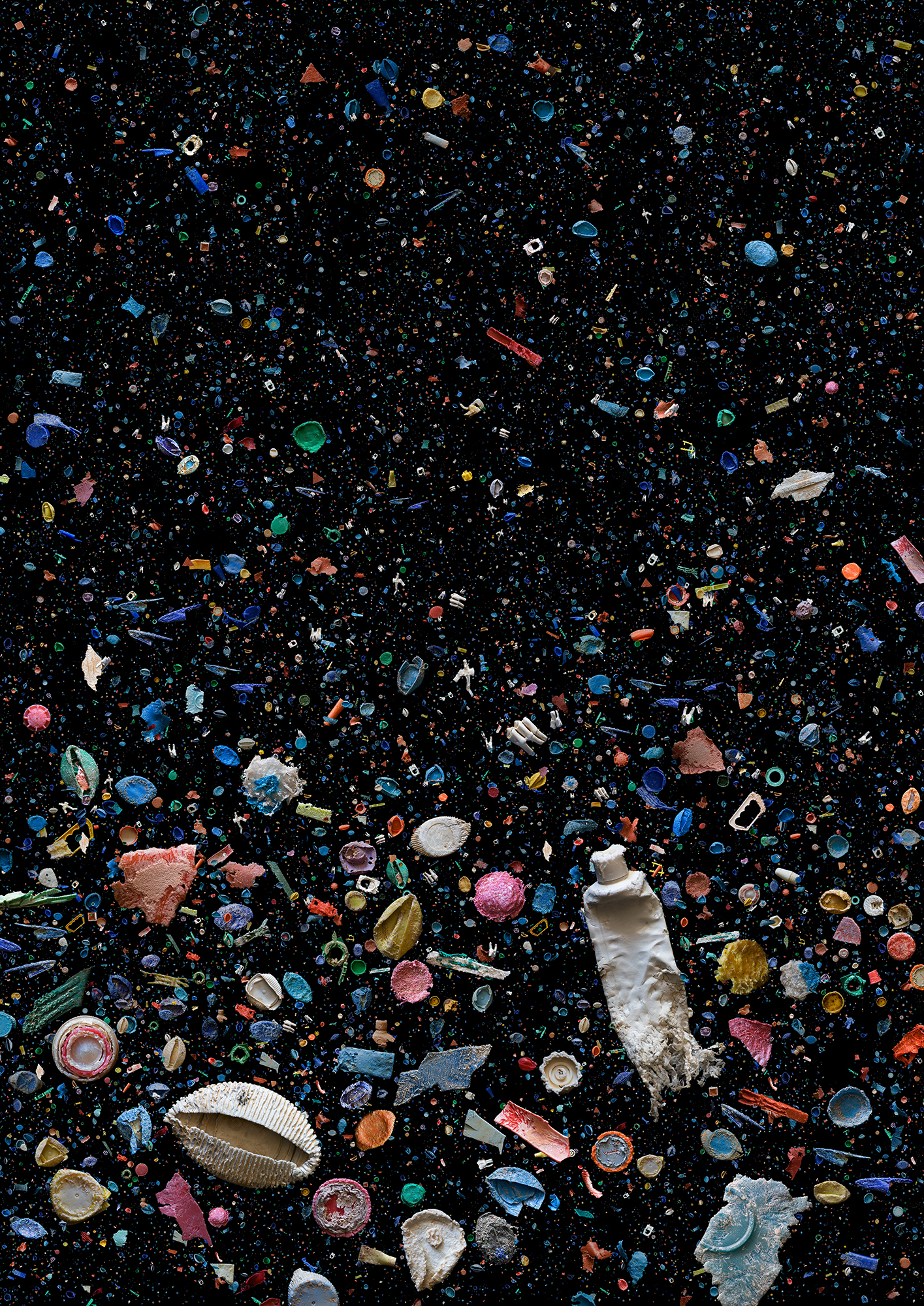
Ingredients: plastic oceanic debris affected by chewing and attempted ingestion by animals. Includes a toothpaste tube. Additives; teeth from goats.
Initial inspiration for my work has come from personal experience, I have always enjoyed being by the sea as a child, collecting natural objects such as driftwood and shells. Increasingly over the years these natural objects have been taken over by man-made waste, especially plastic. I began to notice household appliances such as fridge freezers, computers and TVs on the beach and began to wonder how they got there. I felt this was an environmental concern that others should know about, and this is what stimulated my work in Sea of Artifacts – to spread awareness of my own experience to a wider audience.
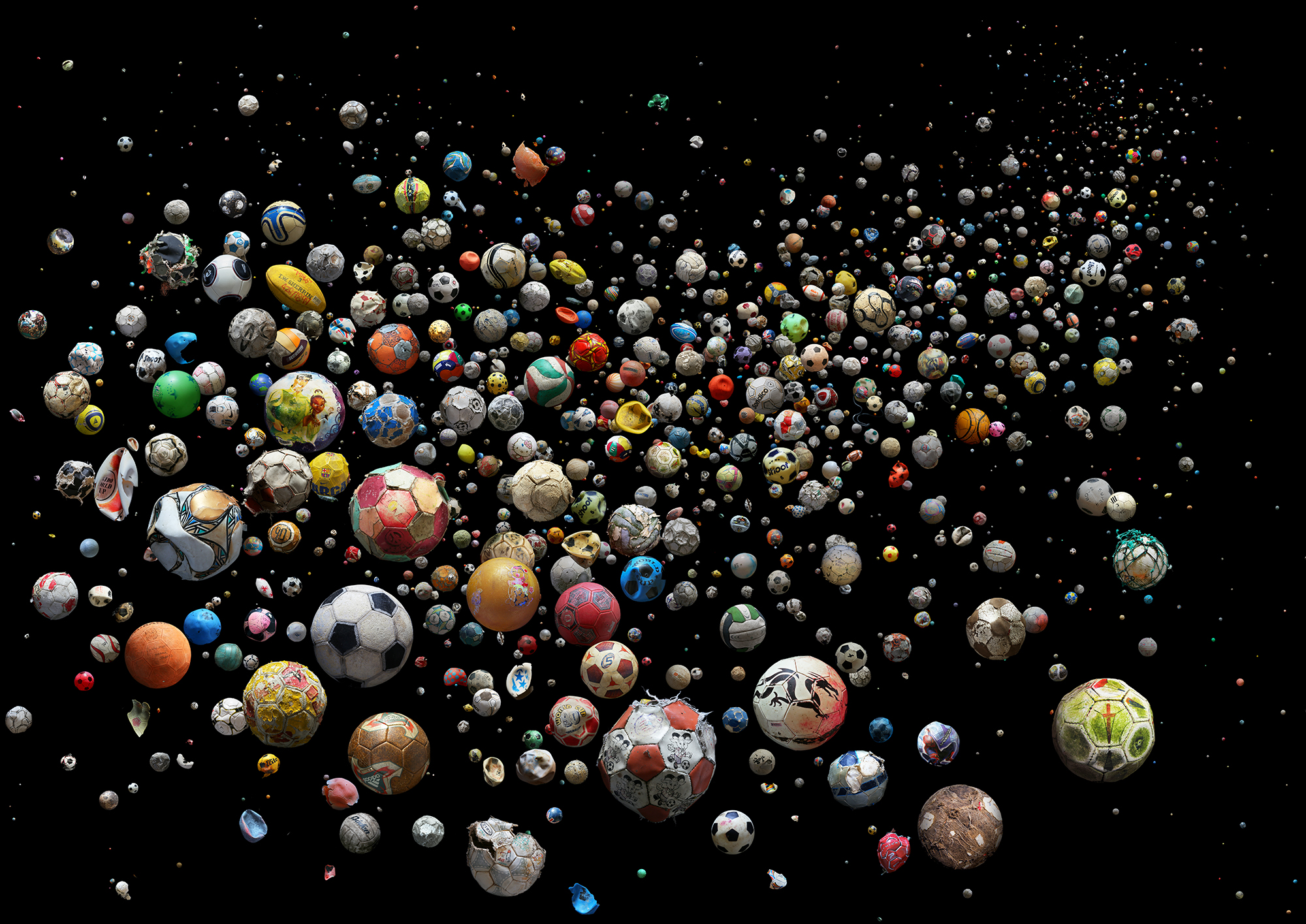
Ingredients: 769 marine plastic debris footballs (and pieces of) collected from 41 countries and islands around the world, from 144 different beaches and by 89 members of the public in just 4 months.
The works I create require new and current information which I find by reading research journals and by attending international conferences as well as working directly with the world’s leading scientists who are studying the problem first hand. If I am shocked by something I have read, there is a good chance that others will be, so this could be the basis of an idea.
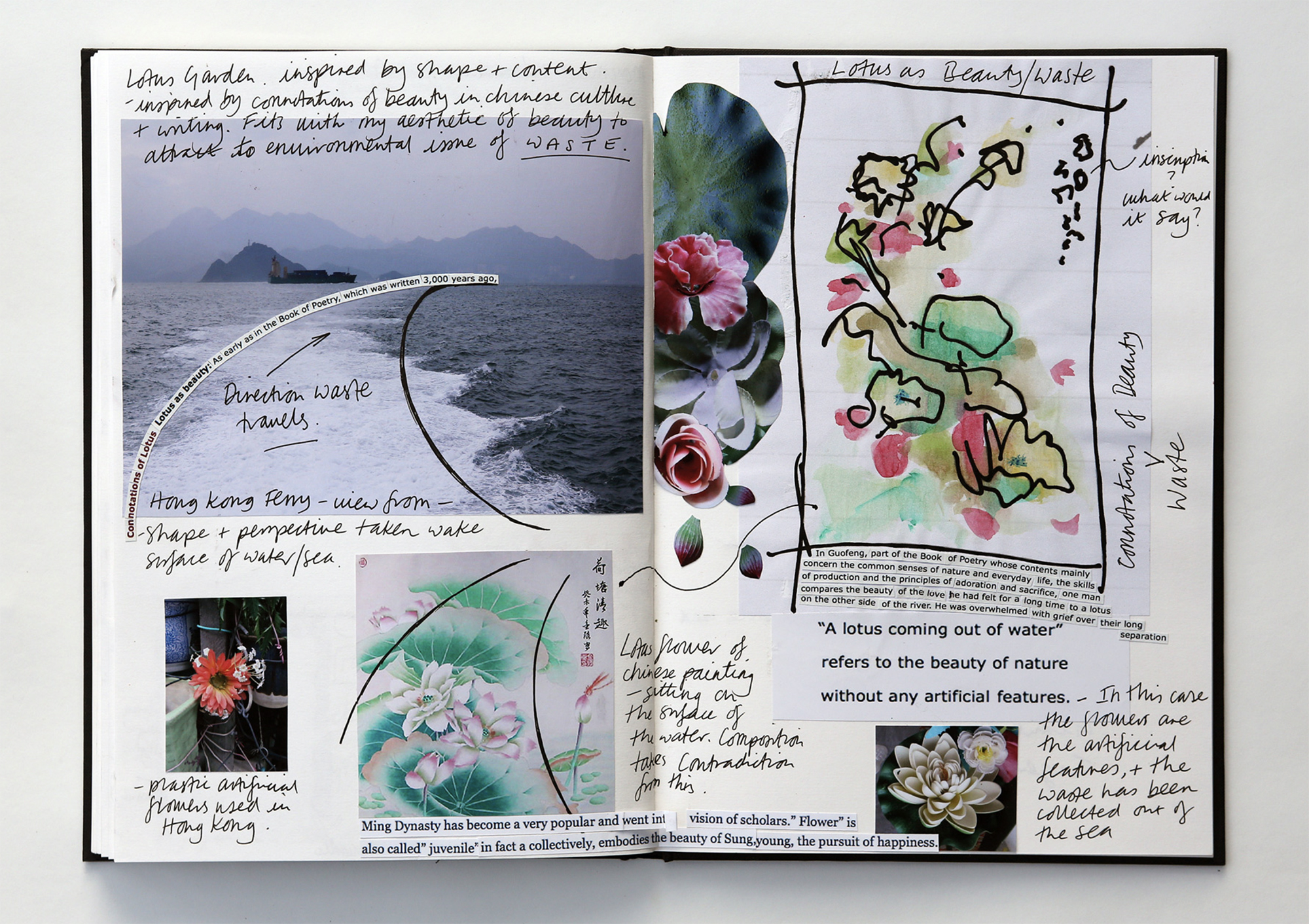
The main aim of my work is to attract the viewer to my images through visual aesthetic attraction, which then leads them by way of the caption, to become aware of the facts concerning the detrimental effects of marine plastic. I hope by presenting them in an accessible way will connect the issue to a wider audience, lead them to action and in some way help inspire change. If photography has the power to encourage people to act, to move them emotionally, or at the very least make them take notice, then this must surely be a vital element to stimulate debate, and ultimately change.
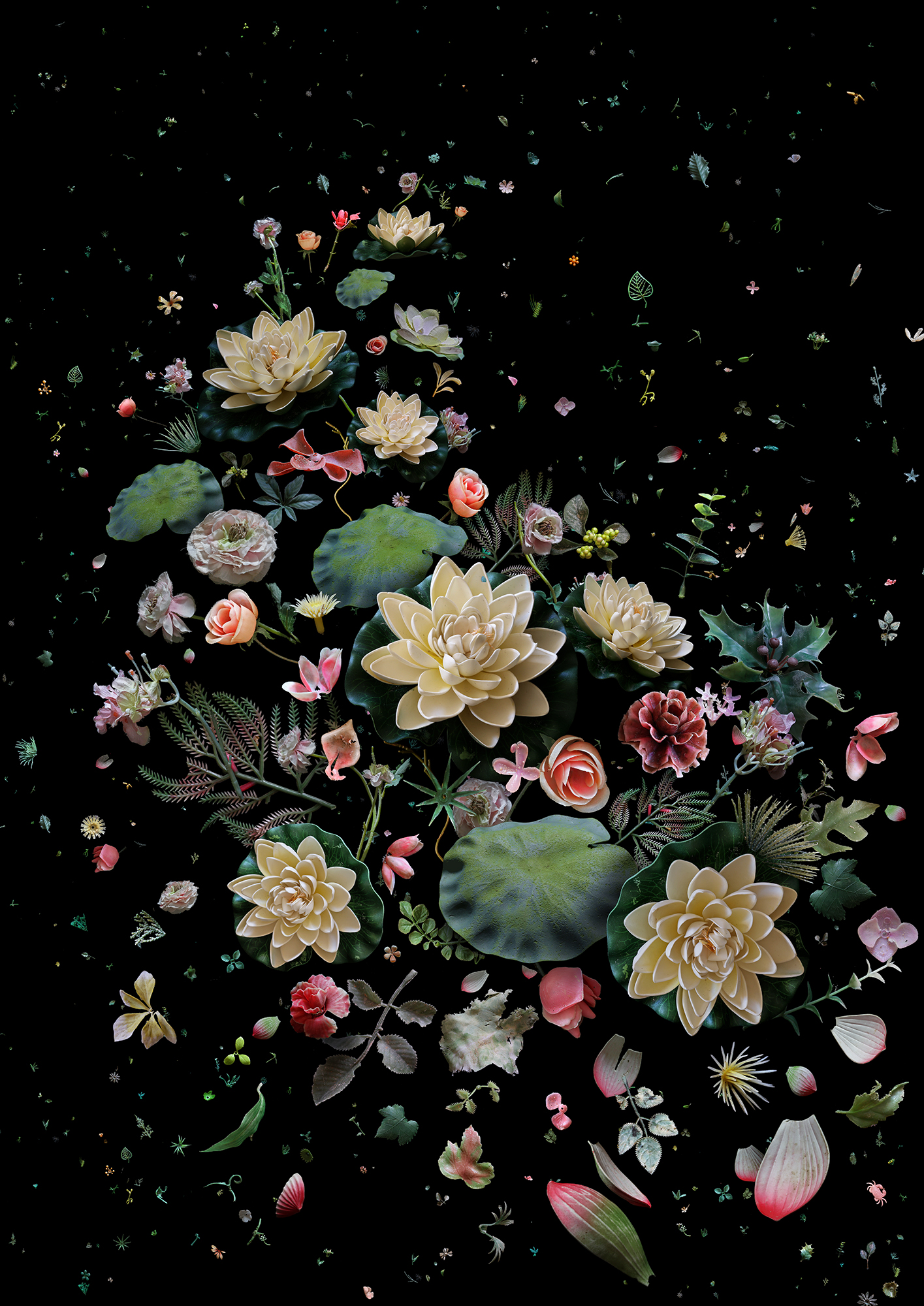
Ingredients: A collection of different species of discarded artificial flowers that would not exist at the same time in nature should not be found in the ocean. The flowers were recovered from various beaches in Hong Kong over three years.
The first project I created for Sea of Artifacts, called INDEFINITE, focused on single objects alongside captions that estimate how long each different type of plastic could remain in the sea before it breaks down. It presented a time-line, telling a story of the marine environment on a nature reserve on the East coast of England in 2010, from a piece of rope that takes 1 Year to break down, and ending with the material polystyrene with the caption Indefinite, that whilst it breaks down into smaller pieces never ever goes away. The objects shown are unwashed and unaltered, as found, and with forms and shapes reminiscent of sea creatures, the very materials that prove fatal to the animals and organisms themselves.
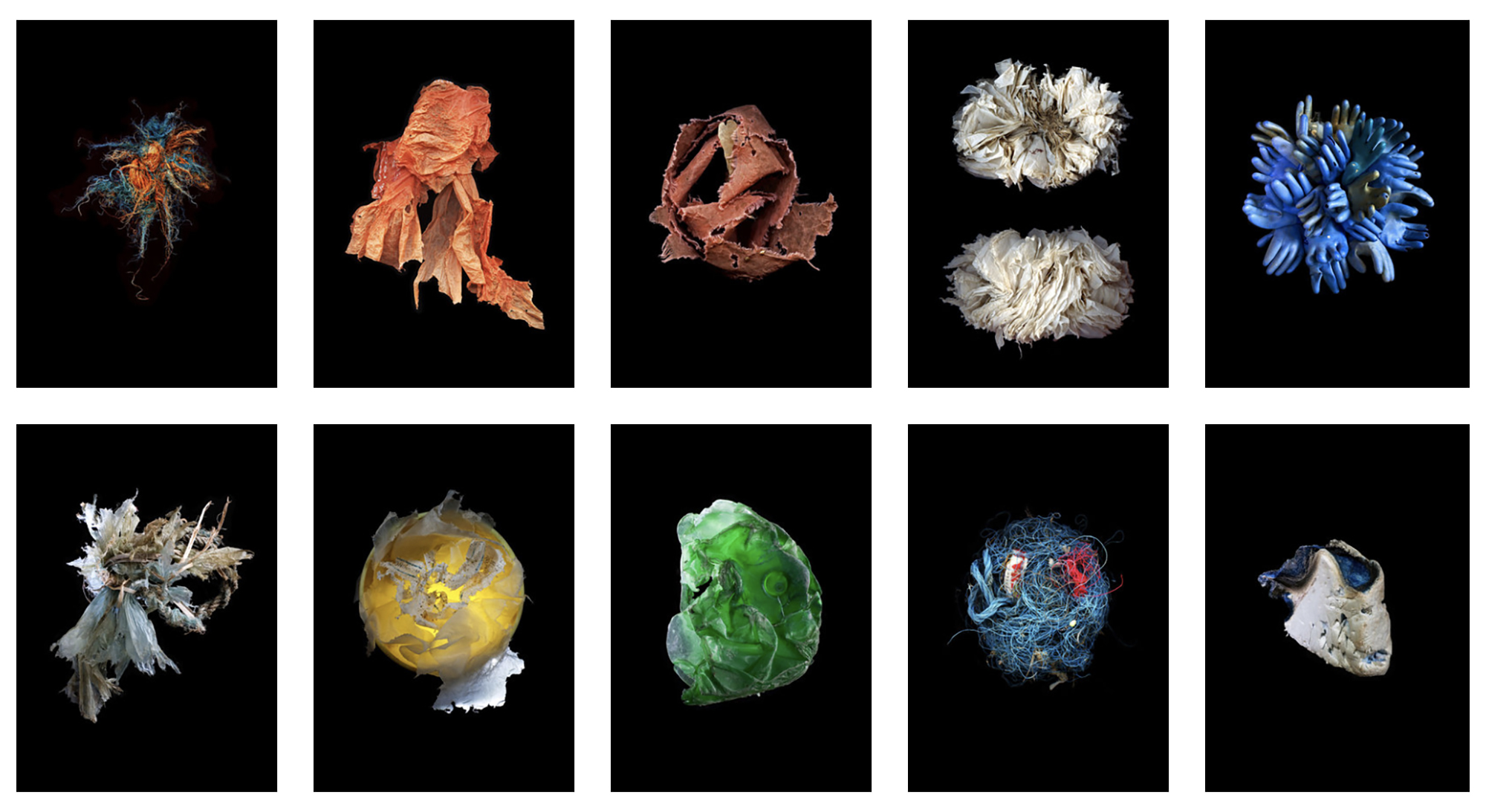
Ingredients: Discarded debris found scattered along the shoreline, having existed for varying amounts of time in the sea, collectively conveys the story of a marine environment.
Scattered down the black wall of the gallery are 276 pieces of plastic from large shards to microplastic particles. This plastic has been recovered from the stomach of a ninety-day old Albatross chick, a sample loaned to me from a scientist that recovered them on the island of Midway in the middle of the North Pacific ocean.
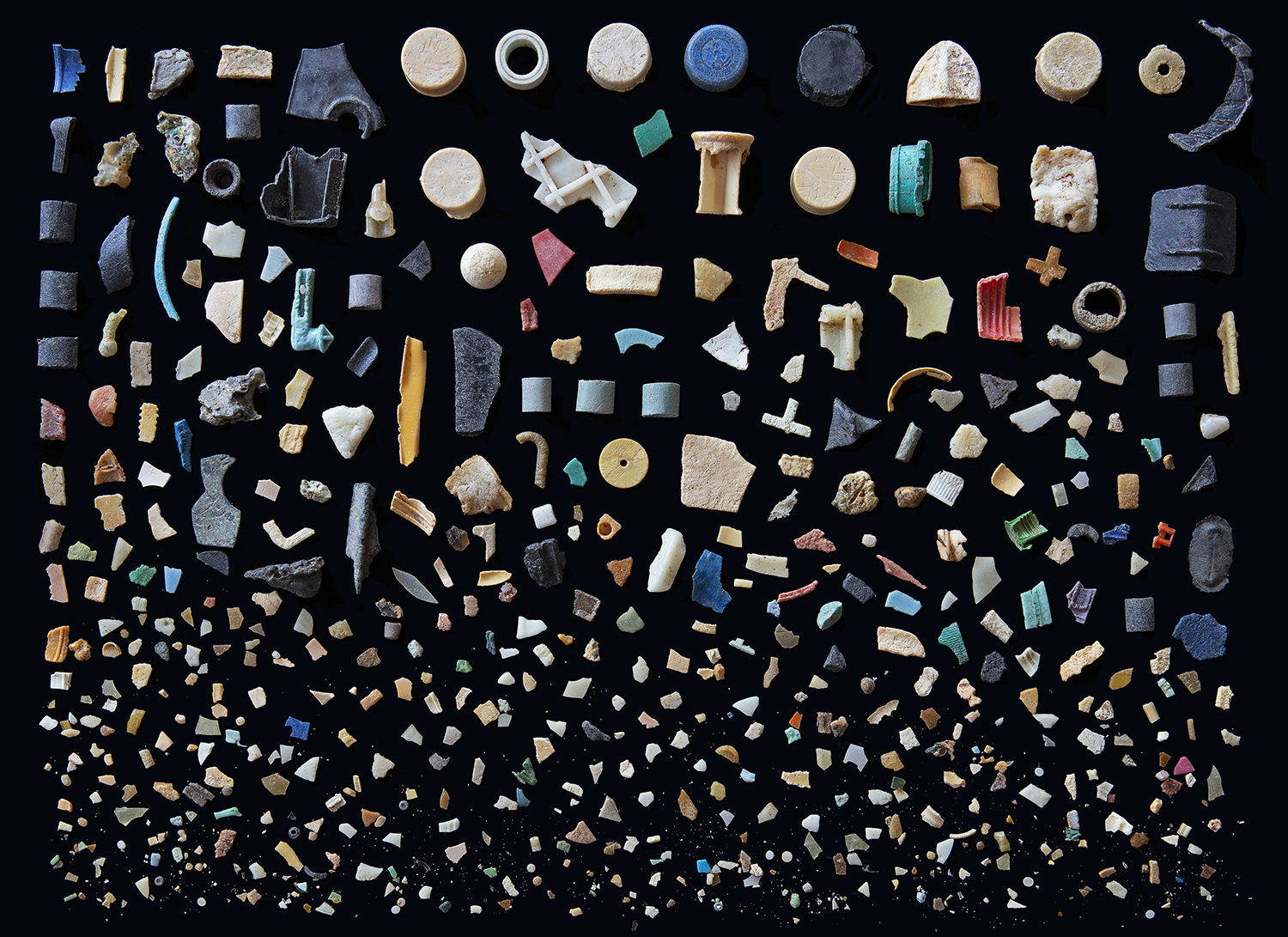
Ingredients: Pieces of plastic fragments recovered from the stomach of ONE 90 day old Albatross chick by Dr. Jennifer Lavers on the Island of Midway, 2012.
The exhibition at Fotografiska, Stockholm, has been an incredible experience for me personally after a marine plastic debris cassette mixtape displayed in one of the vitrines, was recognised by a visiting member of the public as belonging to her, having lost it sometime in the summer of 1993. The tape was recovered from the sea on the shoreline of Lanzarote in August 2017 and after drying it out I sent it to a professional audio restorer who managed to salvage the taped songs which included; Jungle Book, Bob Marley, and the Pet Shop Boys. The owner who was visiting the exhibition from Berlin recognized the tape as being her own, from the choice and order or tracks. The story was verified as a real possibility by one of the world’s leading marine scientists, and was covered by global press and media in over 30 different countries in February this year, which goes on to endorse the fact that it is possible to raise awareness of the plastic pollution issue with the most unlikely coincidence. When you view this image I would like you to imagine the songs being played from it, taking into account that it could possibly have been submerged for 33 years.
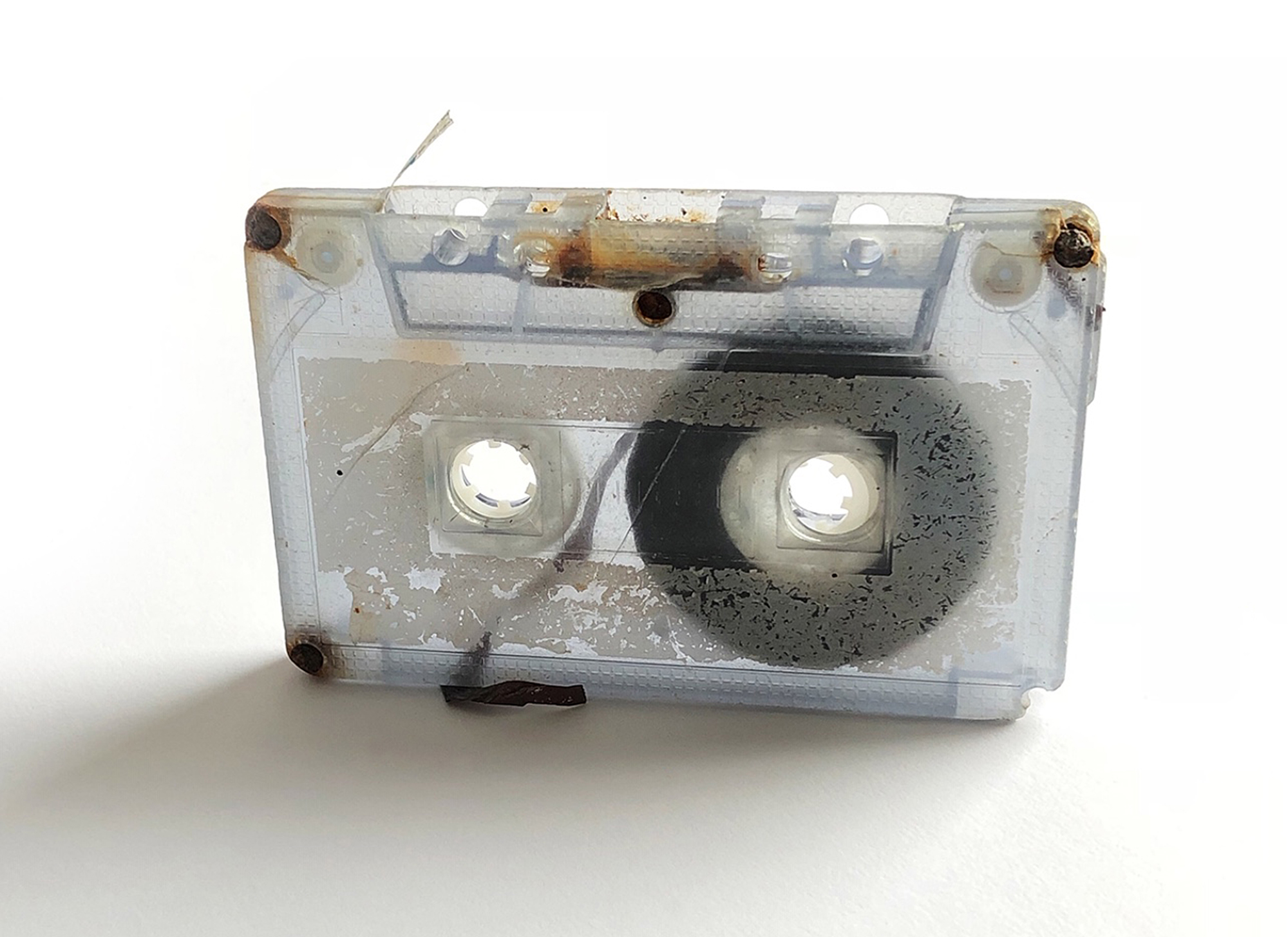
Recovered on 1st August 2017 from the North Atlantic Ocean, from the shoreline of Playa de Barlovento de Jandía, Fuerteventura. Reunited with a member of the public from Berlin having been lost some 24 years previously.
You might also like…
PhD student Nia Jones discusses her research into microplastic, shedding light on the relationship between plastic pollution, single-use plastic and climate change as symptoms of the same issues, capitalism and the overconsumption of resources.
Mandy Barker is an award winning photographer shortlisted for the Prix Picket Award in 2017 and nominated for The Deutsche Börse Foundation Photography Prize 2020 and the Magnum Foundation Fund. Her work has been published in over 40 countries including National Geographic, Time, The Guardian, Smithsonian, and New Scientist, and she regularly takes part in interviews with the BBC, ITV, Greenpeace, Vice, and CNN.
Sea of Artifacts continues to tour as part of the Fotografiska Museum exhibitions. For further details about the work and exhibitions please visit the Mandy Barker website.


